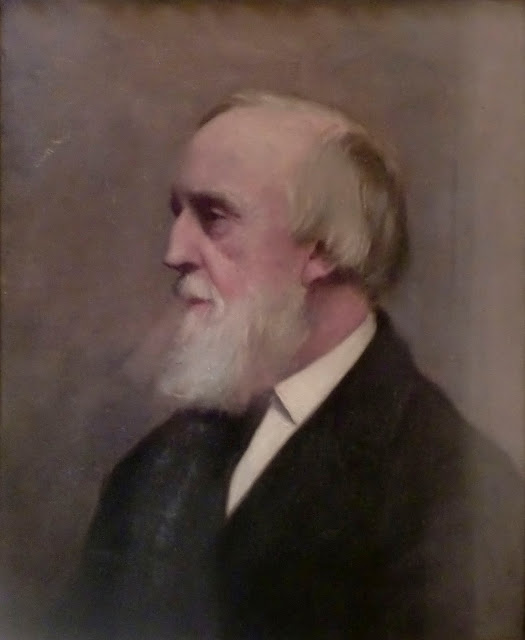Meadville, Pennsylvania, is a town with a special place in typewriter history, so it was pleasing to read in the Meadville Tribune this week that a Densmore 5 typewriter had been donated to the Crawford County Historical Society.
Unfortunately, however, excited society members seem to be under the mistaken belief that their Densmore is far more rare than it actually is. The Tribune reported that it is one of only two known to exist, the one now in Meadville and one in the Smithsonian Institute in Washington DC. There are at least eight in the Dietz Collection in Milwaukee alone, including the beauty seen below, and a quick check of Google reveals there are also examples in the Finnish Business College Typewriter Museum, as well as in the private collections of Richard Polt, Martin Howard, Wim Van Rompuy, Vilhelm Dromberg and Paul Robert, among others.
This one was at one time for sale on Scott McNeill's website for $1295:
The Crawford Historical Society might also like to know that the Densmore typewriter was not the invention of Amos Densmore, but of Walter Jay Barron, the estranged stepson of Amos' brother James Densmore. Barron was actually born (in 1846) and educated in Meadville, unlike Amos Densmore, who was born and grew up in Rochester, New York. Amos was born in 1825 and the Densmore family did not move to Crawford County until 1837.
Along with the typewriter, society president Josh Sherretts received the donation of four paintings by Amos Densmore's daughter Austa Densmore Sturdevant, including a portrait of Amos painted the year he died, 1893.
Amos was always photographed, illustrated or painted looking
to his left, because of skin cancer on his face and forehead.
The donations were made by Arthur Martin of Portland, Oregon, the widower of Priscilla Densmore Martin, Austa’s great-niece.
Sturdevant (1855-1936) was born in Blooming Valley, Crawford. “He [Martin] is really trying to make sure the items will be taken care of for future
generations to enjoy,” Sherretts told the Tribune. “The basic pitch is he wanted them to come home,” added Judith Stoll, a society board member. “There’s a certain sense he felt about them
coming back here, he felt putting them in our hands was putting them in good
hands.”
“When we opened the crates it was like Christmas morning and receiving far
more than you expected,” Stoll said.
Another 1893 portrait
Dietz Collection










No comments:
Post a Comment